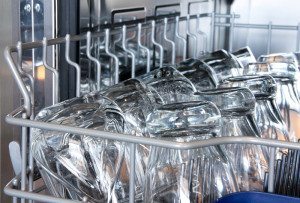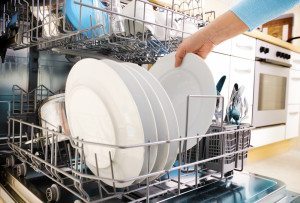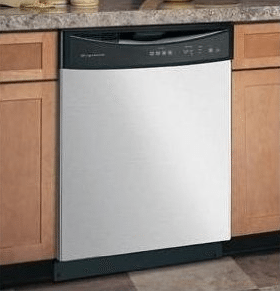Don’t you hate when dishes come out of your dishwasher rusty? If so, you’re in good company.
Your dishwasher seems to be in perfect working order, you’re careful to load it properly and use the correct detergent — so why do your pots, pans and silverware develop rust spots?
the correct detergent — so why do your pots, pans and silverware develop rust spots?
Actually, rust is a fairly common problem that is (usually) easily remedied. Take a look at three common reasons for cookware rust in the dishwasher.
The Uneasy Truce between Stainless Steel and Rust
No matter the grade of your stainless steel utensils, knives, silverware and cookware, the material is only corrosion-resistant, not corrosion-proof. Steel is a blended alloy of chromium, along with other elements, including nickel and iron ore. The exact blend determines its susceptibility to developing rust.
Stainless steel was created to resist corrosive environments, like the inside of a dishwasher, but mild surface rust is fairly common, particularly for items that have run through multiple dishwasher cycles. In most cases, rust can be removed with a lemon juice soak or a product like Bar Keepers Friend.
Problems with Silverware and Utensil Placement
Rust spots can occur as a result of the way that your silverware and utensils are loaded. If they are too close together, they may not dry properly. In that case, water droplets hide between the utensils, sometimes leading to rust spots. Spoons and forks should never be nested together, as this traps the water between them.
Generally it’s best to place silverware with the handles facing downward, unless they protrude through the holes at the bottom of the silverware basket. Try also to avoid placing two spoons or two forks in a single compartment, if you can help it.
If you have different types of metal touching each other in the dishwasher, electrolysis can occur. This can promote rust development, even in stainless steel. Items with metal fittings, such as some cooking utensils and can openers, can also easily develop rust, which can in turn cause rusting in other items.
Damaged Dishwasher Prongs
Over time, the outer vinyl coating on the tines of your dishwasher racks begins to wear away. This exposes the metal underneath to the wet and steamy environment of the dishwasher, leading to the development of rust on the tines.
This rust can transfer onto your stainless steel cookware, bakeware and even your china or dishware. Fortunately, this problem is usually an easy fix. You can use a product like ReRack or Sugru to cover the rusted areas, or purchase a tine repair kit at the hardware store that contains vinyl repair paint along with rubber tips to cover the tine ends.
Although most problems with rust are easy DIY fixes, the issue may be originating from deep inside the machine. If you can’t trace the problem, give Complete Appliance Repair a call. Our expert technicians, serving North Salt Lake, Utah, and the surrounding communities, will troubleshoot the problem, and in most cases, be able to complete the repair the same day. Contact us today if you have any home appliance problems, including rust on your cookware and utensils from your dishwasher.


 results. Many homeowners don’t realize the importance of this routine maintenance task, but it is essential in order to keep your appliance running smoothly.
results. Many homeowners don’t realize the importance of this routine maintenance task, but it is essential in order to keep your appliance running smoothly. the top six signs that it’s time to consider a dishwasher replacement.
the top six signs that it’s time to consider a dishwasher replacement. already covered some things you shouldn’t put in your dishwasher, here is a list of surprisingly helpful things that CAN go through a dish cycle successfully, emerging more sparkly clean and fresh that anything washed by hand. One caveat for these: If the item is not related to food or its consumption, it’s probably better not to include any regular dishes in the same wash load!
already covered some things you shouldn’t put in your dishwasher, here is a list of surprisingly helpful things that CAN go through a dish cycle successfully, emerging more sparkly clean and fresh that anything washed by hand. One caveat for these: If the item is not related to food or its consumption, it’s probably better not to include any regular dishes in the same wash load!